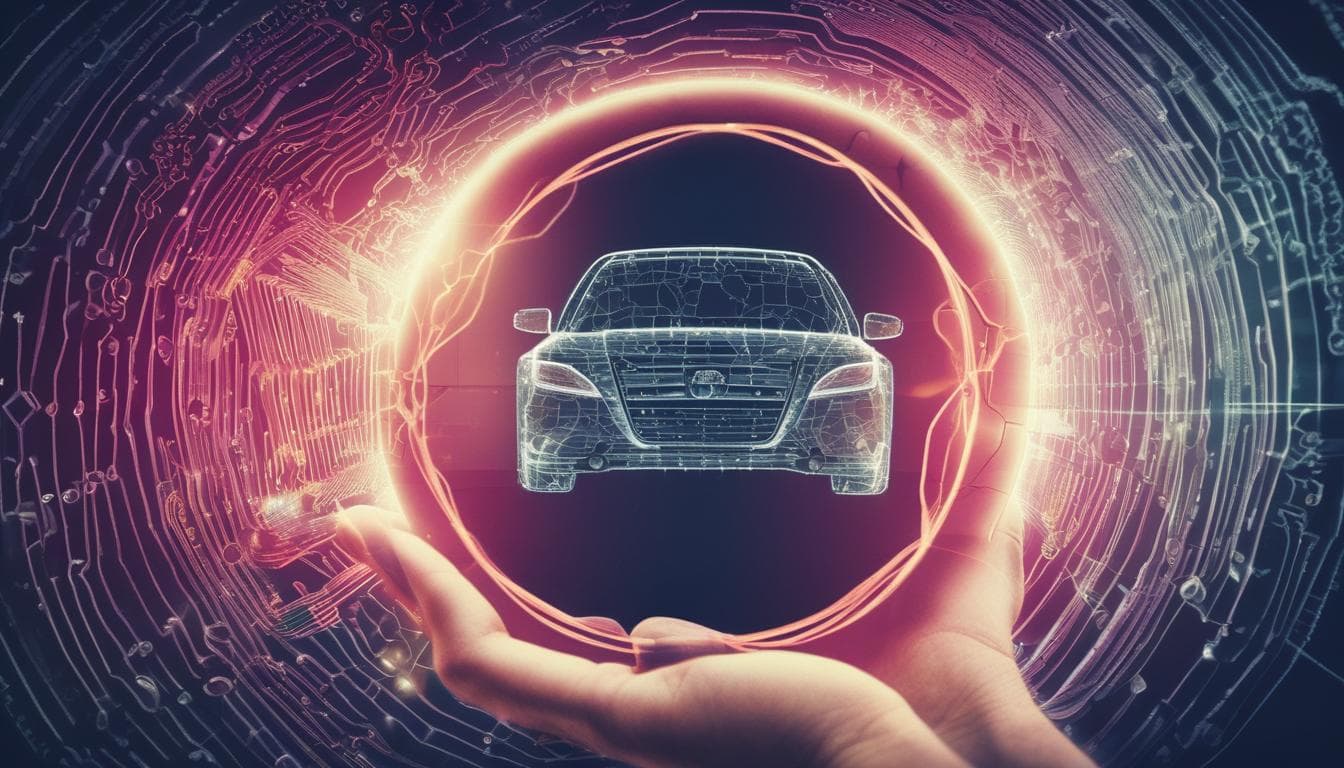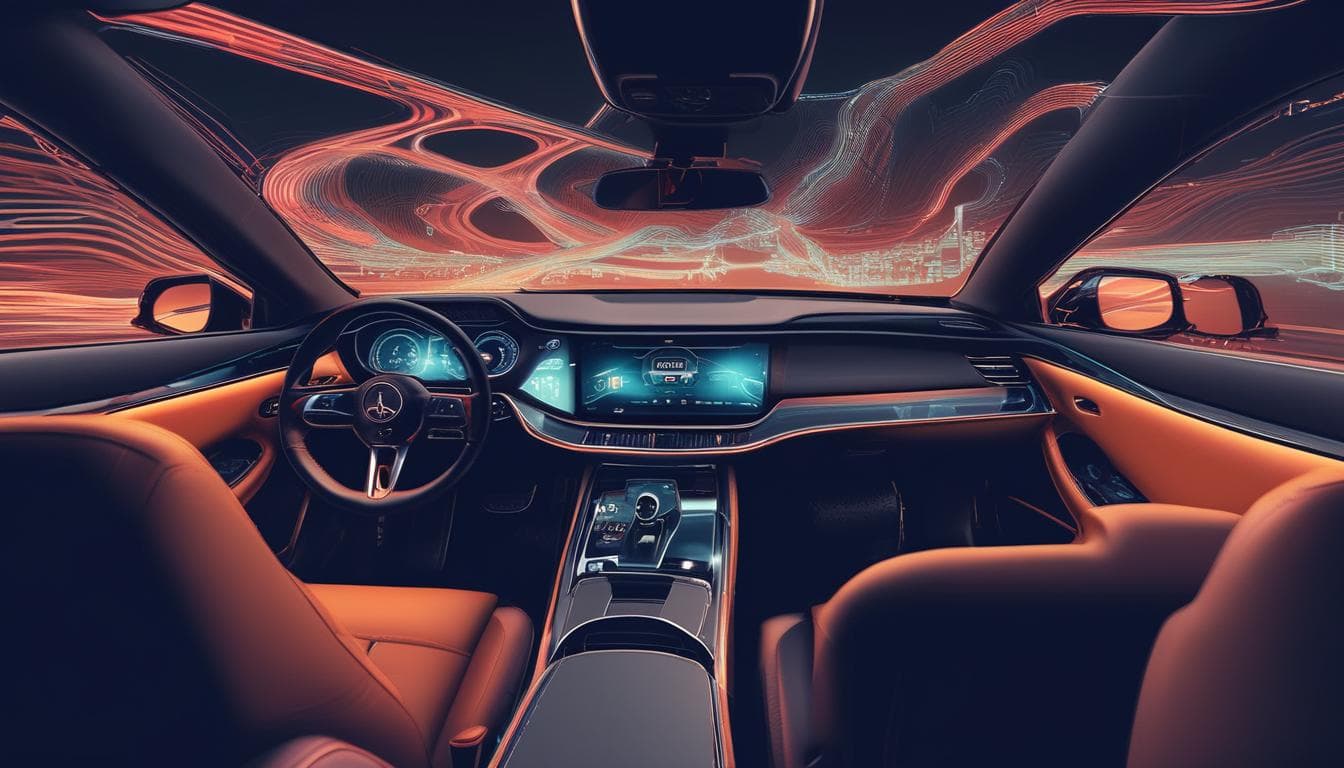The modern vehicle is rapidly transcending its traditional role as a mere mode of transportation. As technology permeates every aspect of our lives, our cars are evolving into intelligent, connected, and increasingly personalized environments. Beyond infotainment and navigation, the next frontier in automotive innovation lies in proactively managing the health and wellness of occupants. This shift is driven by a convergence of advancements in sensor technology, artificial intelligence, and a growing societal emphasis on well-being. In-vehicle health and wellness monitoring systems are poised to revolutionize the driving experience, transforming our cars into vigilant guardians that not only transport us but also care for us. This article delves into the technologies, applications, challenges, and future prospects of these sophisticated systems.
The Journey from Basic Comfort to Proactive Wellness
The concept of occupant well-being in vehicles isn't entirely new, but its scope and sophistication have undergone a dramatic transformation. Early efforts focused on passive comfort and safety, gradually evolving towards more active and intelligent systems designed to monitor and enhance the physiological and psychological state of drivers and passengers.
From Ergonomic Seats to Ambient Atmospheres: The Genesis of In-Cabin Comfort
Historically, automotive manufacturers addressed occupant comfort primarily through ergonomic design. This included adjustable seats with lumbar support, climate control systems, and efforts to reduce noise, vibration, and harshness (NVH). As technology progressed, features like heated and ventilated seats, multi-zone climate control, and premium sound systems became common in higher-end vehicles, aiming to create a more pleasant and less fatiguing journey. More recently, ambient lighting systems with customizable colors and intensity have been introduced to influence mood and reduce eye strain, subtly enhancing the overall in-cabin experience. These foundational elements laid the groundwork for more advanced wellness integrations by establishing the car as a space where comfort and environment could be actively managed.
The Impetus for Health Monitoring: Why Now?
Several converging factors are accelerating the development and adoption of in-car health and wellness systems. An aging global population means more elderly drivers who may benefit from health monitoring while on the road. Increased awareness of mental health and the impact of stress, particularly during long commutes or in congested traffic, has also highlighted the need for solutions that can promote calmness and alertness. Furthermore, the ubiquity of wearable health trackers has conditioned consumers to expect continuous health data and personalized feedback, a demand that is naturally extending to the automotive domain. Breakthroughs in miniaturized, non-invasive sensor technology and the processing power of in-car computers now make it feasible to integrate sophisticated health monitoring capabilities seamlessly and cost-effectively. The potential to significantly improve road safety by detecting driver fatigue or impairment is another powerful motivator.
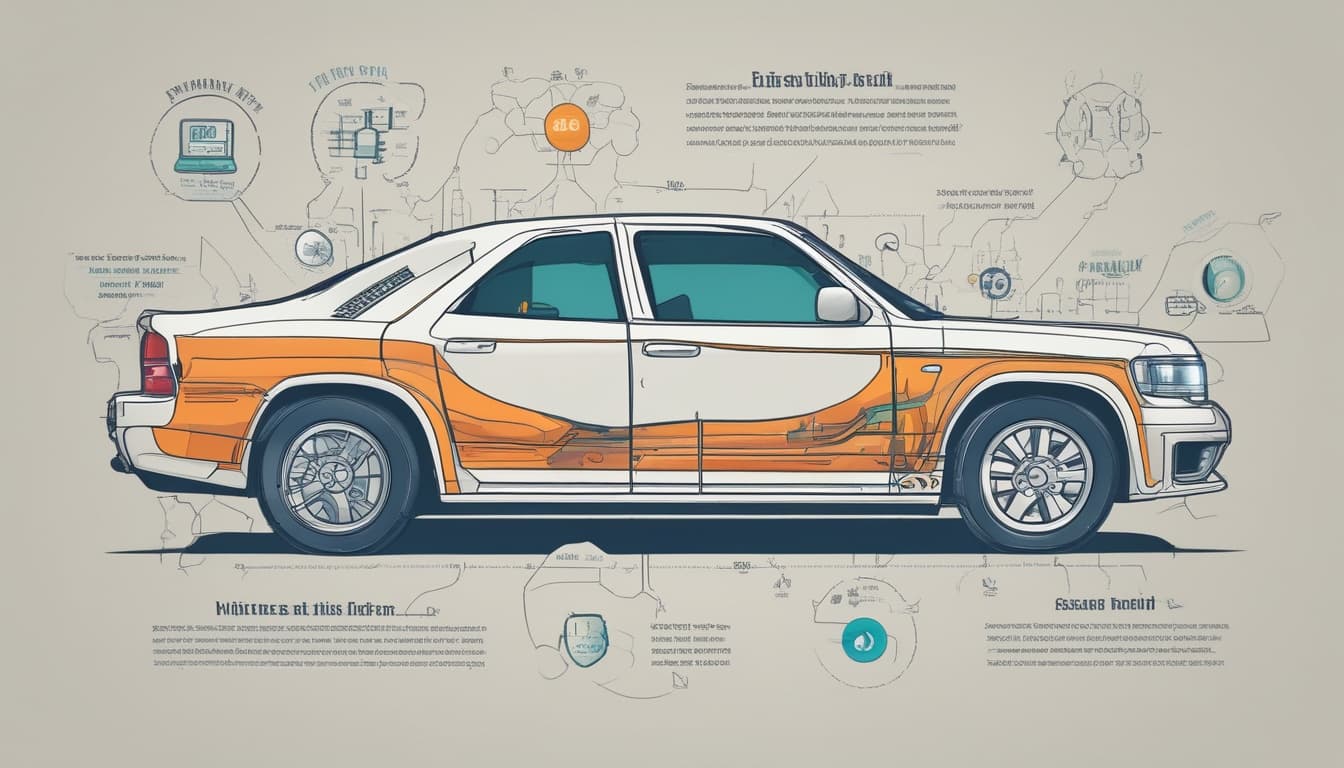
Core Technologies Powering In-Car Wellness Ecosystems
The realization of comprehensive in-car health and wellness monitoring relies on a synergistic interplay of advanced hardware and intelligent software. These technologies work in concert to sense, interpret, and respond to the occupants' physiological and environmental conditions.
Biometric Sensors: The Eyes and Ears of In-Cabin Health
Biometric sensors are the cornerstone of in-vehicle health monitoring, enabling the unobtrusive collection of vital physiological data. These can be integrated into various parts of the car:
- Steering Wheel Sensors: Embedded sensors can measure heart rate, heart rate variability (HRV), and even electrodermal activity (EDA) to gauge stress levels. Some advanced systems are exploring ECG (electrocardiogram) capabilities through steering wheel contact.
- Seat-Integrated Sensors: Ballistocardiography (BCG) sensors in seats can detect heart rate and respiration rate through subtle body movements without direct skin contact. Pressure sensors can also monitor posture and restlessness.
- Camera-Based Monitoring: In-cabin cameras, often utilizing infrared technology, can track eye movements, blink rate, head position, and facial expressions to detect drowsiness, distraction, and emotional states. This builds upon existing driver monitoring systems (DMS) but with an expanded focus on wellness indicators. The potential for enhanced vehicle safety through vigilant in-cabin sensing is immense.
- Wearable Integration: Cars can also sync with personal wearable devices (smartwatches, fitness trackers) to access a broader range of health data, including sleep patterns, activity levels, and more detailed physiological metrics. These sensors provide the raw data necessary for understanding the occupant's current state.
Environmental Sensors: Crafting the Optimal Cabin Milieu
The cabin environment plays a crucial role in occupant comfort and well-being. Advanced environmental sensors continuously monitor and help adjust various parameters:
- Air Quality Sensors: These detect particulate matter (PM2.5), volatile organic compounds (VOCs), CO2 levels, and allergens. The system can then activate air purification systems or recommend ventilating the cabin.
- Temperature and Humidity Sensors: Multi-zone climate control systems use these sensors to maintain personalized comfort levels for each occupant, preventing drowsiness caused by excessive heat or discomfort from cold.
- Light Sensors: Ambient light sensors can adjust interior lighting intensity and color temperature to match the time of day or driver's preference, potentially aiding circadian rhythm regulation on long journeys. By managing these factors, the vehicle can create a healthier and more pleasant micro-environment.
AI and Machine Learning: The Brains Behind Personalized Wellness
Raw data from biometric and environmental sensors is voluminous and complex. This is where Artificial Intelligence (AI) and Machine Learning (ML) algorithms become indispensable. These intelligent systems process the incoming data streams to:
- Identify Patterns and Anomalies: ML models can learn an individual's baseline physiological patterns and detect deviations that might indicate stress, fatigue, or even the onset of a medical issue.
- Provide Personalized Feedback and Interventions: Based on the interpretation of data, the system can initiate proactive measures. For instance, if drowsiness is detected, it might suggest taking a break, increase cabin ventilation, play energizing music, or even activate seat massage functions.
- Adapt and Learn Over Time: The system can learn user preferences and adapt its responses, becoming more attuned to the individual's needs. This journey towards truly personalized in-car experiences driven by AI and Big Data is a key trend in the automotive industry. AI transforms the car from a passive data collector into an active participant in managing occupant well-being.
Advanced Human-Machine Interfaces (HMIs): Intuitive Interaction
For in-car wellness systems to be effective, interaction must be seamless and non-distracting. Advanced HMIs are crucial for this:
- Voice Control: Natural language understanding allows drivers to request wellness adjustments or receive health feedback without taking their hands off the wheel or eyes off the road.
- Gesture Control: Simple hand gestures can be used to control certain wellness features, further minimizing distraction.
- Haptic Feedback: Subtle vibrations in the seat or steering wheel can provide alerts or guidance.
- Smart Displays: Information is presented clearly and concisely, often integrated into digital cockpits or head-up displays (HUDs), providing insights without overwhelming the driver. The goal is to make these sophisticated systems feel intuitive and integrated, rather than like an additional layer of complexity, reflecting advancements in next-generation automotive human-machine interfaces.
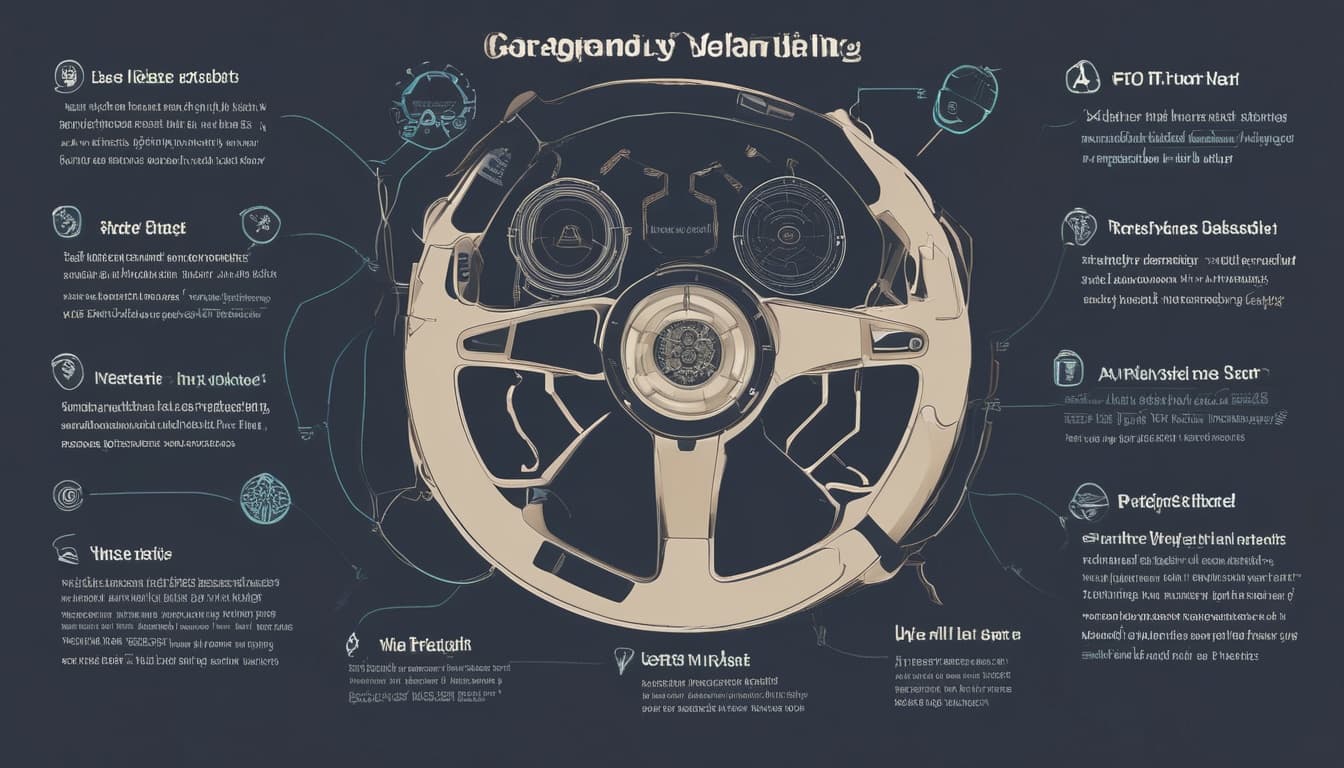
Real-World Applications and Multifaceted Benefits
The integration of health and wellness monitoring systems into vehicles offers a wide array of practical applications, leading to tangible benefits for both driver safety and overall passenger experience. These systems are not just about comfort; they represent a paradigm shift towards proactive care on the move.
Elevating Driver Safety and Alertness
One of the most significant advantages of in-car wellness systems is their potential to enhance road safety.
- Drowsiness and Fatigue Detection: By continuously monitoring blink rates, head nods, and even physiological signs like slowing heart rate, these systems can detect early signs of driver fatigue. Alerts can range from audible warnings and haptic feedback to suggestions to pull over and rest. Some systems might even interact with advanced driver-assistance systems (ADAS) to increase intervention levels if fatigue is severe.
- Stress and Distraction Mitigation: By analyzing heart rate variability, voice tone, or driving patterns, the car can identify heightened stress levels. It might then suggest calming music, initiate a gentle seat massage, or adjust cabin lighting to a more soothing hue. Similarly, detecting driver distraction can trigger alerts to refocus attention on the road.
- Medical Emergency Response: In critical situations, such as a driver experiencing a heart attack or other sudden medical incapacitation, the vehicle could potentially detect the event, slow down safely (or pull over if equipped with sufficient autonomous capabilities), and automatically alert emergency services, providing location and vital signs data.
Boosting Passenger Well-being and Personalized Comfort
Beyond safety, these systems aim to create a more enjoyable and rejuvenating environment for all occupants.
- Personalized Microclimates: Each passenger can have their temperature, airflow, and even seat heating/cooling preferences automatically adjusted based on their physiological feedback or pre-set profiles.
- Mood Enhancement: The system can curate playlists, adjust ambient lighting, and even release pleasant, calming, or energizing scents (via integrated diffusers) to match or influence the occupants' mood.
- Proactive Health Nudges: For long journeys, the car might remind occupants to stretch, hydrate, or perform simple in-seat exercises. It could also offer guidance on posture correction.
- Motion Sickness Mitigation: By monitoring passenger biometrics and vehicle dynamics, future systems might proactively adjust suspension settings, airflow, or display visual cues to help alleviate motion sickness.
Seamless Integration with Personal Health Ecosystems
The true power of in-car wellness systems can be amplified when they connect with the broader personal health ecosystem.
- Data Sharing with Wearables and Apps: Information gathered in the car can be synced with users' existing health apps and wearable devices, providing a more holistic view of their well-being throughout the day.
- Remote Monitoring and Caregiver Alerts: With user consent, data could be shared with family members or caregivers, particularly for elderly drivers or those with chronic health conditions, providing peace of mind.
- Telehealth Capabilities: Future integrations could even enable basic telehealth consultations from the vehicle, leveraging in-car cameras and connectivity, especially useful in remote areas or for non-urgent advice.
Tailored Use Cases for Diverse Demographics
The applications of in-car wellness can be customized for different user groups:
- Daily Commuters: Stress reduction features, air quality management, and fatigue alerts are particularly beneficial.
- Long-Haul Truck Drivers: Advanced fatigue detection, posture support, and health monitoring are critical for safety and occupational health.
- Families with Children: Cabin monitoring for child presence (preventing hot car incidents), air quality control, and entertainment/calming features tailored for younger passengers.
- Elderly Drivers: Discreet health monitoring, emergency alert systems, and assistance features to enhance confidence and safety.
- Ride-Sharing and Autonomous Fleets: Ensuring passenger comfort, safety, and a pleasant experience becomes paramount, with wellness features serving as a key differentiator.

| User Demographic | Key Wellness Benefits | Example Features |
|---|---|---|
| Daily Commuters | Stress reduction, fatigue management, enhanced focus | Calming ambient lighting, air purification, energizing audio cues, traffic stress alerts |
| Professional Drivers | Sustained alertness, reduced physical strain, occupational health monitoring | Advanced drowsiness detection, posture guidance, long-duration comfort settings |
| Families with Children | Passenger safety, comfort, reduced travel stress | Rear-seat occupant monitoring, personalized climate zones, motion sickness mitigation |
| Elderly Drivers | Enhanced safety, medical emergency support, increased driving confidence | Vital signs monitoring, automated emergency calls, simplified HMI for wellness features |
| Ride-Sharing Passengers | Personalized comfort, hygienic environment, positive travel experience | Individual climate/lighting profiles, air quality indicators, seamless wearable sync |
Navigating Challenges and Ethical Dilemmas
While the potential of in-car health and wellness monitoring is vast, its widespread adoption is contingent upon addressing several significant challenges and ethical considerations. These hurdles range from technical limitations to profound questions about privacy and user autonomy.
Data Privacy and Security: The Foremost Concern
The collection of sensitive physiological data raises substantial privacy concerns. Users must have clear, transparent control over what data is collected, how it's used, and with whom it's shared. Robust cybersecurity measures are essential to protect this data from unauthorized access or breaches. As vehicles become increasingly connected, ensuring the security of these rolling data centers is a critical imperative that extends directly to wellness data. Secure data storage, encryption, and anonymization techniques will be crucial, as will clear consent mechanisms. The potential for data misuse, whether by manufacturers, insurers, or other third parties, must be proactively mitigated through strong regulations and ethical guidelines.
Accuracy, Reliability, and Interference
For these systems to be trusted, especially in safety-critical applications like drowsiness detection or medical alerts, the sensors and algorithms must be exceptionally accurate and reliable. False positives (e.g., misinterpreting a yawn as severe fatigue) could be annoying or lead to unnecessary interventions, while false negatives (e.g., failing to detect a genuine medical emergency) could have severe consequences. Environmental factors, individual physiological variations, and even certain clothing or accessories could potentially interfere with sensor readings. Rigorous testing and validation across diverse populations and conditions are essential.
User Acceptance, Over-Reliance, and Distraction
The success of these systems also depends on user acceptance. Some individuals may find constant monitoring intrusive or overwhelming. The HMI must be designed to provide information and alerts in a non-distracting manner. There's also the risk of over-reliance, where drivers might push their limits, assuming the car will always compensate for fatigue or inattention. Educational efforts will be needed to ensure users understand the capabilities and limitations of these systems. Furthermore, the systems themselves must not become a source of distraction; alerts and interventions should be subtle and intuitive.
Regulatory Landscape and Standardization
The field of in-car health monitoring is relatively new, and the regulatory landscape is still evolving. Clear guidelines and standards will be needed for data handling, system performance, and safety implications. For instance, what level of accuracy is required for a system that can trigger an emergency call? How should liability be addressed if a system fails? Standardization across manufacturers for certain basic functionalities could also improve user experience and facilitate interoperability with other health platforms. The development of biometric systems in vehicles for identification and personalization also intersects with these wellness data concerns, requiring careful regulatory thought.
Cost and Accessibility
Initially, comprehensive in-car wellness systems are likely to be premium features, available primarily in luxury vehicles. For these technologies to have a widespread impact on public health and road safety, they need to become more affordable and accessible across a broader range of vehicle segments. This will require ongoing innovation in sensor technology, software development, and manufacturing processes to reduce costs without compromising performance or reliability.

The Future Unveiled: Your Car as a Proactive Health Guardian
The trajectory of in-car health and wellness monitoring points towards an increasingly sophisticated and integrated future, where the vehicle plays an active role not just in reactive safety, but in proactive health management and personalized care. As technologies mature and converge, our cars are set to become true mobile health guardians.
Predictive Health Insights and Early Warnings
Future systems will move beyond real-time monitoring to offer predictive health insights. By analyzing long-term physiological trends, sleep patterns (potentially synced from wearables), and even subtle changes in driving behavior, AI algorithms could identify early warning signs of developing health issues, such as chronic stress, sleep disorders, or even cardiovascular irregularities. The car might then gently suggest consulting a healthcare professional or recommend lifestyle adjustments. This proactive approach could be revolutionary in preventative care, leveraging the significant amount of time many people spend in their vehicles.
Deeper Integration with Autonomous Driving Systems
As autonomous driving capabilities advance, the role of in-cabin wellness monitoring will become even more critical. In highly autonomous vehicles, where the "driver" may be a passenger, the system can focus entirely on optimizing comfort, productivity, or relaxation. If a passenger falls ill or becomes incapacitated in a fully autonomous vehicle, the car could independently navigate to a hospital or a safe location and alert medical services, building on the insights from the dawn of autonomous fleets. The wellness system could also adjust the driving style of an autonomous vehicle (e.g., smoother acceleration/braking) based on passenger comfort or susceptibility to motion sickness.
The Expanding Role of In-Cabin Sensing
The evolution of in-cabin sensing technologies will redefine automotive safety and experience in profound ways. Beyond current capabilities, future sensors might include non-contact glucose monitoring, advanced breath analysis for detecting biomarkers, or even brainwave (EEG) monitoring through subtle headrest sensors for more precise cognitive state assessment. This wealth of data will enable an unprecedented level of understanding of occupant well-being, leading to highly personalized and adaptive cabin environments.
Synergies with Broader Smart City and Healthcare Infrastructures
In-car wellness systems will not exist in isolation. They will increasingly connect with broader smart city infrastructures and digital healthcare platforms. For instance, a vehicle detecting a severe medical event could communicate directly with traffic management systems to clear a path for emergency responders. Data from the car could seamlessly integrate into electronic health records (with user consent), providing doctors with valuable contextual information. This interconnectedness will create a more holistic and responsive health ecosystem.
Ethical AI and Continuous Learning
As these systems become more intelligent and autonomous in their interventions, the ethical implications will need continuous scrutiny. Ensuring that AI decision-making is fair, transparent, and aligned with user preferences and well-being will be paramount, echoing the challenges of navigating the moral maze of ethical AI. The foundational role of AI in transforming the automotive landscape makes ethical considerations in this domain particularly crucial.
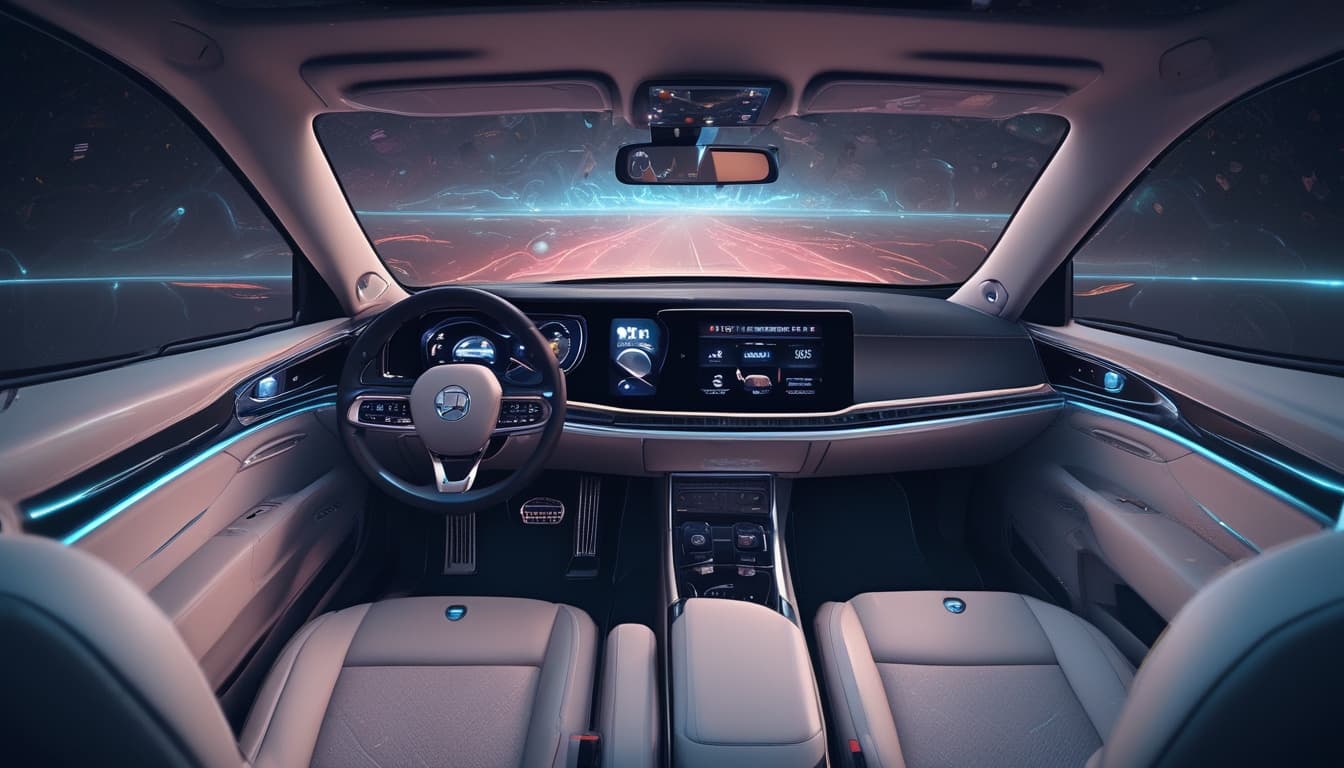
Conclusion: The Empathetic Vehicle of Tomorrow
The integration of health and wellness monitoring systems is transforming the automobile from a passive transporter into an active, empathetic partner in our daily lives. By leveraging sophisticated biometric and environmental sensors, intelligent AI algorithms, and seamless human-machine interfaces, vehicles are becoming capable of understanding and responding to our physiological and psychological needs in unprecedented ways. The benefits are compelling: enhanced driver safety through fatigue and stress detection, improved passenger comfort via personalized environments, and the potential for early health warnings and emergency assistance.
However, this exciting future is not without its hurdles. Addressing concerns around data privacy, ensuring system accuracy and reliability, fostering user acceptance, and navigating the evolving regulatory landscape are crucial steps. The journey towards the truly sentient, health-aware vehicle will require ongoing collaboration between automakers, technology developers, healthcare professionals, and policymakers.
The car of tomorrow promises to be more than just smart; it will be considerate, intuitive, and genuinely focused on our well-being. As these technologies mature and become more accessible, they hold the potential to make every journey safer, healthier, and more harmonious. The continued exploration and refinement of in-vehicle health and wellness systems represent a significant leap towards a future where our vehicles actively contribute to a better quality of life.
What are your thoughts on your car monitoring your health? Share your opinions and join the discussion on Fagaf about the future of automotive wellness!


